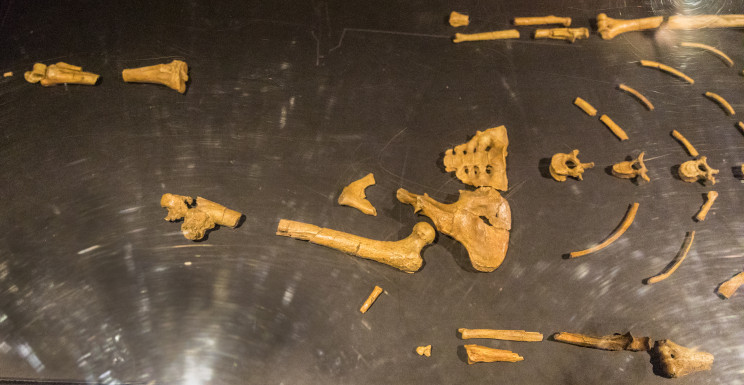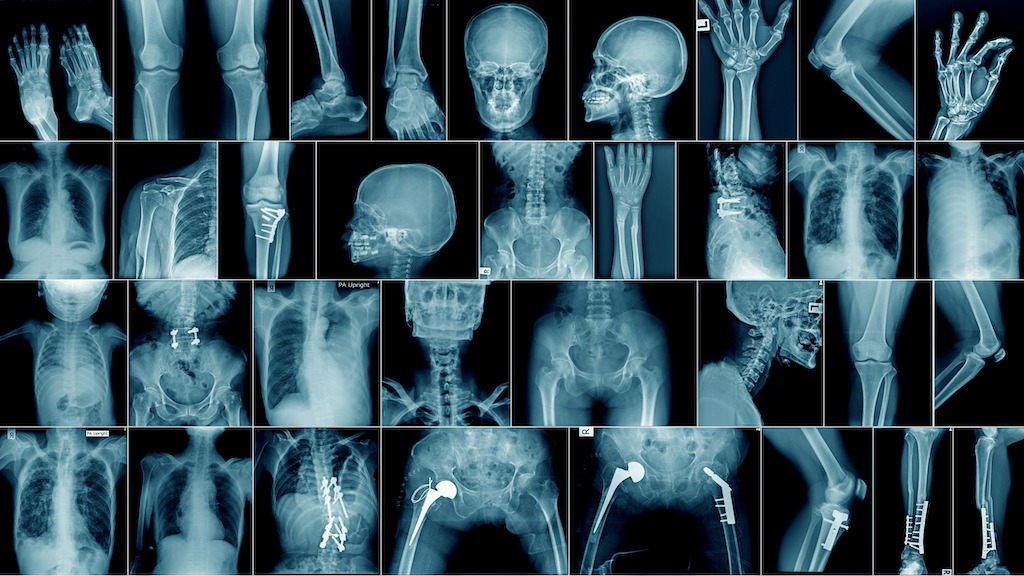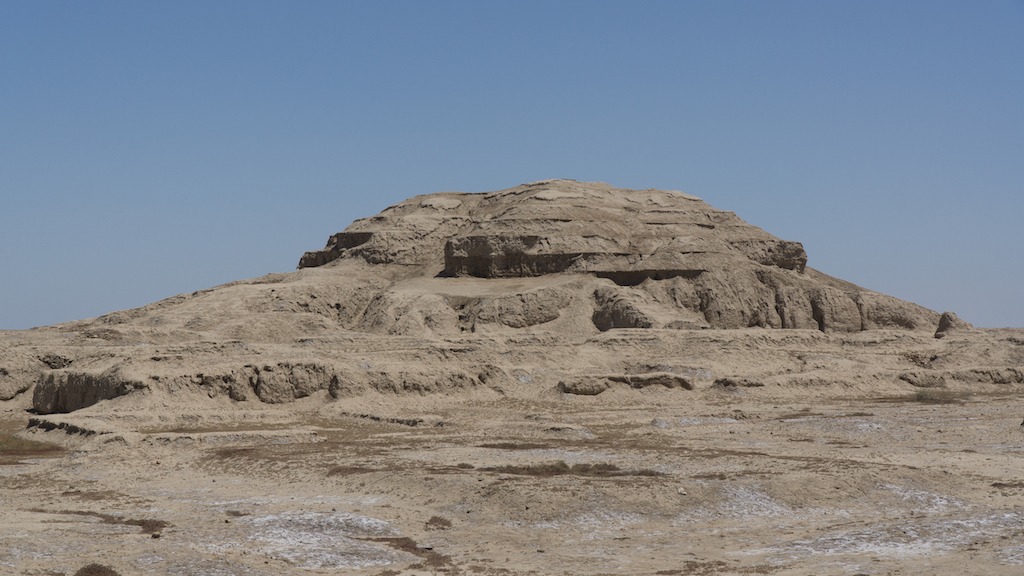How old if mankind? No matter if you are religious or not the dawn of man is still a question to be asked. Well an article from interestingengineering.com written by Deena Theresa points to the fact man may have started 1 million years earlier than expected. Here is the article:
"An innovative fossil dating method developed by Darryl Granger, a professor of earth, atmospheric, and planetary sciences in Purdue University's College of Science, has revealed that multiple fossil remains of early human ancestors were found at the site of Sterkfontein Caves could be much, much older than previously thought.
In a study published Monday in the Proceedings of the National Academy of Sciences, a team of scientists used space particles to analyze bones in the Sterkfontein Caves, part of a major fossil site in northern South Africa known as the "Cradle of Humankind."
Their findings pushed the age of some of these fossils back by more than a million years. This would make them older than Dinkinesh, also known as Lucy, the world's most famous Australopithecus fossil.
Cradle of civilization
For decades, paleoanthropologists and other scientists have studied Sterkfontein and other cave sites in the Cradle of Humankind to shed light on human and environmental evolution over the past four million years.
In 1924, Professor Robert Burns Young from Buxton Limeworks in the Taung district of the North West Province of South Africa sent two crates of fossils from Taung to Professor Raymond Dart of the University of the Witwatersrand in Johannesburg.
Dart immediately recognized the significance of a small fossil skill that belonged to a creature that was neither fully ape nor man. It represented one of our ancestors - an extinct hominin closely related to humans - which he called Australopithecus africanus, meaning "southern ape of Africa."
Since then, thousands of fossils, including hominid fossils, have been uncovered at the "Cradle of Humankind," a UNESCO World Heritage Site that comprises a variety of fossil-bearing cave deposits, including at Sterkfontein Caves. The latter was made famous by the discovery of the first adult Australopithecus, an ancient hominin, in 1936. Hundreds of Australopithecus fossils have been found there, including the well-known Mrs. Ples, and the nearly complete skeleton known as Little Foot.
The fossils are much older than we thought
Now, Granger and a team of scientists, including researchers from the University of the Witwatersrand in Johannesburg, South Africa, and the University Toulouse Jean Jaurès in France, have discovered that not only Little Foot, but all of the Australopithecus-bearing cave sediments date from about 3.4 to 3.7 million years old, rather than 2-2.5 million years old as scientists previously theorized.
That age places the fossils toward the beginning of the Australopithecus era, rather than near the end. Dinkinesh, who hails from Ethiopia, is 3.2 million years old, and her species, Australopithecus africanus, hails back to about 3.9 million years old.
"Sterkfontein has more Australopithecus fossils than anywhere else in the world," Granger said in a statement. "But it's hard to get a good date on them. People have looked at the animal fossils found near them and compared the ages of cave features like flowstones and gotten a range of different dates. What our data does is resolve these controversies. It shows that these fossils are old – much older than we originally thought."
Scientists used accelerator mass spectrometry to measure radioactive nuclides in the rocks
Now, there are a few ways to date cave sediments. In East Africa, where many hominin fossils have been found, the Great Rift Valley volcanoes lay down layers of ash. Scientists use those layers to estimate the age of a fossil. In the caves in South Africa, researchers don't have the "luxury." They usually employ other animal fossils found around the bones to estimate their age or calcite flowstone deposited in the cave.
The fallacy in the technique is that bones can shift in the cave, and young flowstone can be deposited in old sediment, making those methods potentially incorrect. A more accurate method would be to date the actual rocks in which the fossils were found. The concrete-like matrix that embeds the fossil, called breccia, is the material Granger and his team analyzes.
Granger and the team used accelerator mass spectrometry to measure radioactive nuclides in the rocks, as well as geologic mapping and a deeper understanding of how cave sediments accumulate to determine the age of the Australopithecus-bearing sediments at Sterkfontein.
The dating method gives 'reliable' results
The team also made detailed maps of the cave deposits and revealed how animal fossils of different ages would have been intermixed during excavations in the 1930s and 1940s, which, in all possibilities, would have led to decades of confusion about the previous ages.
"What I hope is that this convinces people that this dating method gives reliable results," Granger said. "Using this method, we can more accurately place ancient humans and their relatives in the correct periods, in Africa, and elsewhere across the world."
The age of the fossils influences scientists' understanding of the living landscape of the time. It could answer several complex and pressing questions - the evolution of humans in a particular place, their fit in the ecosystem, and who their closest relatives are and were.
Dating the fossils at Sterkfontein back to their right age is a significant step towards solving the entire picture.
Abstract: Sterkfontein is the most prolific single source of Australopithecus fossils, the vast majority of which were recovered from Member 4, a cave breccia now exposed by erosion and weathering at the landscape surface. A few other Australopithecus fossils, including the StW 573 skeleton, come from subterranean deposits [T. C. Partridge et al., Science 300, 607–612 (2003); R. J. Clarke, K. Kuman, J. Hum. Evol. 134, 102634 (2019)]. Here, we report a cosmogenic nuclide isochron burial date of 3.41 ± 0.11 million years (My) within the lower middle part of Member 4, and simple burial dates of 3.49 ± 0.19 My in the upper middle part of Member 4 and 3.61 ± 0.09 My in Jacovec Cavern. Together with a previously published isochron burial date of 3.67 ± 0.16 My for StW 573 [D. E. Granger et al., Nature 522, 85–88 (2015)], these results place nearly the entire Australopithecus assemblage at Sterkfontein in the mid-Pliocene, contemporaneous with Australopithecus afarensis in East Africa. Our ages for the fossil-bearing breccia in Member 4 are considerably older than the previous ages of ca. 2.1 to 2.6 My interpretation from flowstones associated with the same deposit. We show that these previously dated flowstones are stratigraphically intrusive within Member 4 and that they therefore underestimate the true age of the fossils."
I found it interesting how challenging it really is to determine the age of bones in caves. The way the measures now makes sense and has shown humans may have started far earlier than expected.
Reference: https://interestingengineering.com/ancient-human-fossils-humankind-million-years-older

I have lost a lot of faith with the Medical Community and the Governments over the last several years, but there are a few good things that can raise above the corruption and the pushing of drugs a new approach to heal people. The following is from www.gaia.com and written by Hunter Parsons that does not involve any drug or pushing an ineffective so called vaccine that the drug company is not held accountable in any way but they use sound! The use of sound can regrow bone tissue! Here is the story:
"The future of regenerative medicine could be found within sound healing by regrowing bone cells with sound waves.
The use of sound as a healing modality has an ancient tradition all over the world. The ancient Greeks used sound to cure mental disorders; Australian Aborigines reportedly use the didgeridoo to heal; and Tibetan or Himalayan singing bowls were, and still are, used for spiritual healing ceremonies.
Recently, a study showed an hour-long sound bowl meditation reduced anger, fatigue, anxiety, and ...
Not a fan of a Defense Agency studying Anti-Gravity and other Exotic Tech, but if the commercial world and make this technology cheap that will change our world yet again. The following is about three minute read and from www.gaia.com. The below was written by Hunter Parsons:
"Wormholes, invisibility cloaks, and anti-gravity — it’s not science fiction, it’s just some of the exotic things the U.S. government has been researching.
A massive document dump by the Defense Intelligence Agency shows some of the wild research projects the United States government was, at least, funding through the Advanced Aerospace Threat Identification Program known as AATIP.
And another lesser-known entity called the Advanced Aerospace Weapons System Application Program or AAWSAP
The Defense Intelligence Agency has recently released a large number of documents to different news outlets and individuals who have filed Freedom of Information Act requests.
Of particular interest are some 1,600 pages released to Vice News, which ...
As our technology gets better we are discovering more about the history of mankind and pushing the timeline back further and further. The following article is from www.gaia.com and written by Michael Chary that discusses this new find that changes the historical timeline:
"Over the past decade, there have been a number of archeological revelations pushing back the timeline of human evolution and our ancient ancestors’ various diasporas. Initially, these discoveries elicit some resistance as archeologists bemoan the daunting prospect of rewriting the history books, though once enough evidence is presented to established institutions, a new chronology becomes accepted.
But this really only pertains to the era of human development that predates civilization — the epochs of our past in which we were merely hunter-gatherers and nomads roaming the savannahs. Try challenging the consensus timeline of human civilization and it’s likely you’ll be met with derision and rigidity.
Conversely, someone of an alternative...
Not sure if you have heard of a show on YouTube called "The Why Files". If not you should check it out it is interesting and has some humor with it on different subjects. Last weeks was on a different theory how the Universe works and how main stream Science is attempting to shut it down like is always seems to do if it goes aguest some special interest. Today it is akin to what happened to those who questioned the Earth was the Center of the Universe that main stream so called Science all believed during the Renaissance period, They called any theory that the Earth was not the Center of the Universe misinformation. Does this sound familiar today? People laughed and mocked people like Leonardo da Vinci, Nicolaus Copernicus, Georg Purbach as crack-pots, conspiracy theorists, nut-jobs and they were suppressed and even imprisoned for their radical thoughts and observations. Again it sounds like today in so many ways. In any event this is a good one to ponder and see even if a bad idea ...
Seemingly chaotic systems like the weather and the financial markets are governed by the laws of chaos theory.
We all have heard about chaos theory, but if you have not or have forgotten what chaos theory is well here you go from interestingengineering.com:
"Chaos theory deals with dynamic systems, which are highly sensitive to initial conditions, making it almost impossible to track the resulting unpredictable behavior. Chaos theory seeks to find patterns in systems that appear random, such as weather, fluid turbulence, and the stock market.
Since the smallest of changes can lead to vastly different outcomes, the long-term behavior of chaotic systems is difficult to predict despite their inherently deterministic nature.
As Edward Lorenz, who first proposed what became commonly known as the Butterfly Effect, eloquently said, "Chaos: When the present determines the future, but the approximate present does not approximately determine the future.""
You may have heard the term about chaos theory as a butterfly flaps its wings in Brazil,...
I for one have lost trust in Medical Doctors due to COVID and reflection that they seem to push pills for everything and untested so called vaccines that is using a unproven technology because the Government and the Medical Boards of the State told them to. There are a very few exceptions. Thus they do not address the key problem just prescribe more and more pills to keep you alive an sick longer for them and Big Phama to profit from you. Will AI do any better? Well that depends on what was used for the training of AI. If it also pushes pills and vaccines without question then you have the same problems noted above. However, if the AI Training includes all possible forms of treatment and they zero in on the right issues for the true problem then there is possibilities they would be way better than most of the current Medical Doctors today.
The following is from an article from interestingengineering.com and written by Paul Ratner:
"A new study looks at how accurately AI can diagnose patients. We interview the researcher, who weighs in on AI's role ...






















